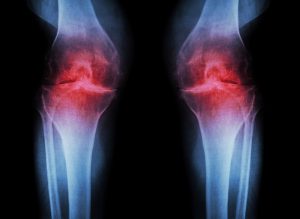“Arthritis” is a term used to describe a wide range of conditions that negatively impact the musculoskeletal system. The word arthritis is Greek for joint inflammation, one of the most defining arthritis symptoms.
With more than 100 different variations of the disease, there are also slight differences in arthritis symptoms.
Overarching Arthritis Symptoms
All patients suffering from arthritis will experience some level of discomfort and pain. Arthritis pain varies in severity and duration depending on the underlying cause, disease progression, and trigger events. Other common arthritis symptoms include:
- Joint stiffness
- Joint swelling
- Joint stiffness
- Joint tenderness
- Impaired joint function and mobility
- Fatigue and malaise
- Difficulties sleeping
These arthritis symptoms may then give way to secondary symptoms such as reduced flexibly, poor aerobic fitness, and muscle weakness. The symptoms of arthritis can have a significant impact on quality of life, making normally easy daily activities challenging.
Common Arthritis Types and their Symptoms
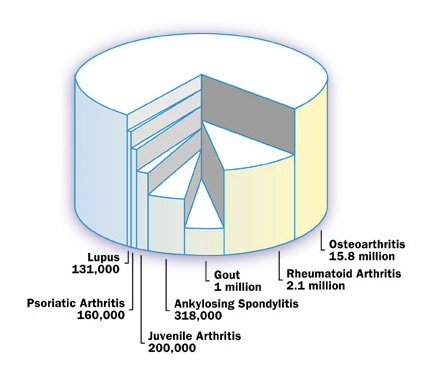
While there are many different arthritis classifications, some are more prevalent than others.
Osteoarthritis and rheumatoid arthritis are by far the most common forms of arthritis affecting 80% and 10% of all patients respectively.
Gout (5%), ankylosing spondylitis (1.6%), juvenile arthritis (1%), fibromyalgia, psoriatic arthritis (0.8%) and systemic lupus erythematosus (SLE, 0.7%) are also among the most diagnosed types forms of the disease after osteoarthritis and rheumatoid arthritis.
Effectively Managing Arthritis
There are many different arthritis treatment options. Exercise is very important to help maintain joint flexibility and mobility.
Arthritis diets are also valuable to help reduce inflammation and minimise oxidative stress on the body. There are a variety of medications available specific to different types of arthritis, as well as key joint supplements that can help alleviate arthritis symptoms.
Supplements are a particularly effective way to support joint health and there is plenty of scientific research to confirm their effectiveness. However, products differ significantly in quality and value for money. Read our comparison of the top supplements for joint care to make informed choices.
Managing arthritis symptoms takes a multi-disciplinary response. While each patient will need a different approach based on the type of arthritis they have and their individual circumstances there are overarching themes.
References
[/vc_column_text][/vc_column][/vc_row]
- “Murphy, L. et.al. (2008), Lifetime risk of symptomatic knee osteoarthritis. Arthritis and Rheumatism, Volume 59, Issue 9, (pp. 1207-12).” ↩
- “Murphy, L. et.al. (2010). One in four people may develop symptomatic hip osteoarthritis in his or her lifetime. Osteoarthritis Cartilage, Volume 18, Issue 11, (pp.1372-9).” ↩
- “Nyhall-Wahlin, B. et.al. (2006). Smoking is a strong risk factor for rheumatoid nodules in early rheumatoid arthritis. Annals of the Rheumatic Diseases. Volume 65, Issue 6, (pp. 601-6)” ↩
- “DiFrancesco, L. (1994). Detailed immunohistologic evaluation of a methotrexate-induced nodule. Archives of Pathology & Laboratory Medicine. Volume 118, Issue 12, (pp. 1223-5).” ↩
- “Thorne, J. et.al. (2007). Juvenile idiopathic arthritis-associated uveitis: Incidence of ocular complications and visual acuity loss. American Journal of Ophthalmology. Volume 143, Issue 5, (pp. 840-6).” ↩
- “Gladman, D. et.al. (2005). Psoriatic arthritis: epidemiology, clinical features, course, and outcome. Annals of the Rheumatic Diseases. Volume 64, Issue 2.” ↩
- “Ogdie, A. et.al. (2013). Prevalence and treatment patterns of psoriatic arthritis in the UK. Rheumatoidology, Volume 52, Issue 3, (pp. 568-75).” ↩
- “Helliwell, P. (2009). Psoriatic arthritis: its presentation and management in primary care. In: “Hands On”, Series 6.” ↩
- “O’Neill, S. and Cervera, R. (2010). Systemic lupus erythematosus. Best Practice & Research Clinical Rheumatology, Volume 24, Issue 6, (pp. 841-55).” ↩
- “Petri, M. (2002). Epidemiology of systemic lupus erythematosus. Best Practice & Research Clinical Rheumatology, Volume 16, Issue 5, (pp. 847-58).” ↩
- “Dean, L. et.al. (2014). Global prevalence of ankylosing spondylitis. Rheumatology, Volume 53, Issue 4, (pp. 650-7).” ↩
- “Kuo, C. et.al. (2013). Rising burden of gout in the UK but continuing suboptimal management: a nationwide population study. Annuals of Rheumatic Diseases, doi:10.1136/annrheumdis-2013-204463.” ↩
- “Doherty, M. (2009). New insights into the epidemiology of gout. Rheumatoid. Volume 48, Issue 2.” ↩

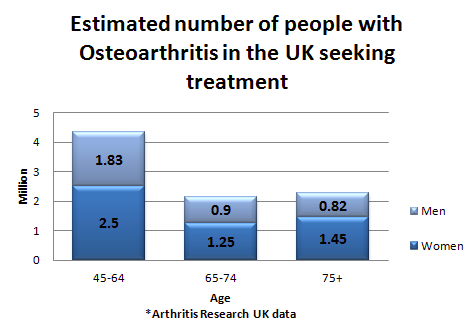 In the United Kingdom almost 9 million people have sought treatment for osteoarthritis. It is the most common form to arthritis.
In the United Kingdom almost 9 million people have sought treatment for osteoarthritis. It is the most common form to arthritis.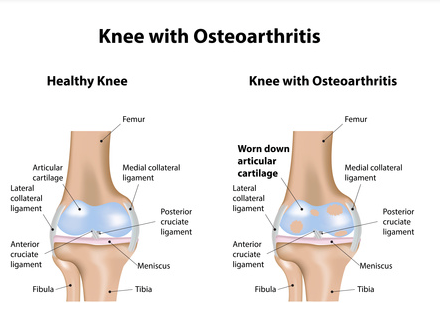 The onset of the disease is very gradual. Initially patients may notice stiffness of the affected joint, especially in the morning. As the disease progresses, stiffness will become more common, joint swelling and pain will increase, and mobility will be impaired. In addition to the stiffness, swelling and pain symptoms, there will also be radiographic changes, with the narrowing of the joint space, bony sclerosis, and osteophyes.
The onset of the disease is very gradual. Initially patients may notice stiffness of the affected joint, especially in the morning. As the disease progresses, stiffness will become more common, joint swelling and pain will increase, and mobility will be impaired. In addition to the stiffness, swelling and pain symptoms, there will also be radiographic changes, with the narrowing of the joint space, bony sclerosis, and osteophyes.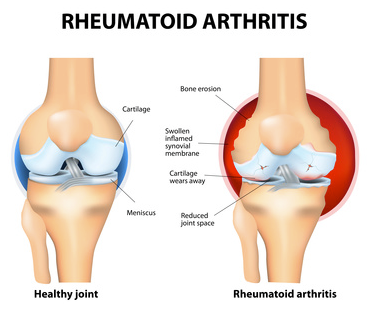 The immune system sends antibodies to the joints where they attack the synovial membrane. The resulting inflammation causes the release of enzymes that start to damage the bones, cartilage, tendons, and ligaments. This eventually leads to joint degradation and physical alteration of the shape and alignment of the affected joint.
The immune system sends antibodies to the joints where they attack the synovial membrane. The resulting inflammation causes the release of enzymes that start to damage the bones, cartilage, tendons, and ligaments. This eventually leads to joint degradation and physical alteration of the shape and alignment of the affected joint.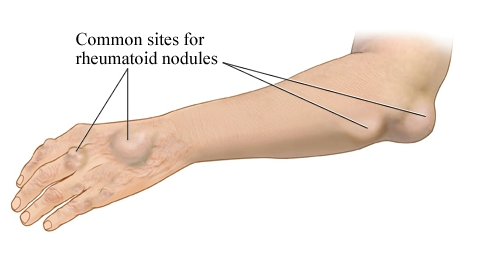 Approximately 20-35% of people with rheumatoid arthritis develop rheumatoid nodules.
Approximately 20-35% of people with rheumatoid arthritis develop rheumatoid nodules.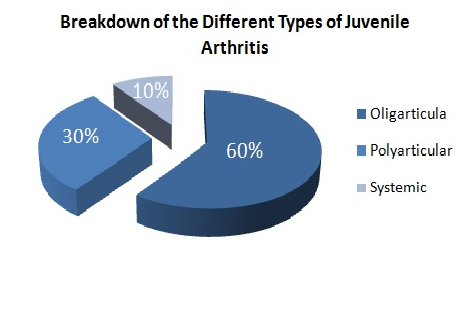 Childhood arthritis is often termed as juvenile idiopathic arthritis.
Childhood arthritis is often termed as juvenile idiopathic arthritis.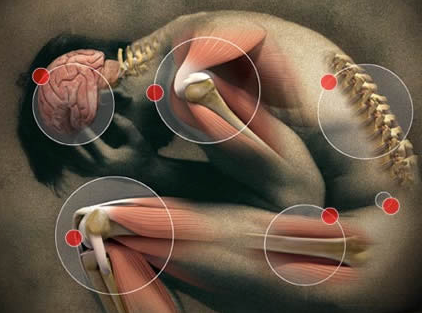 Fibromyalgia can affect many different areas of the body.
Fibromyalgia can affect many different areas of the body.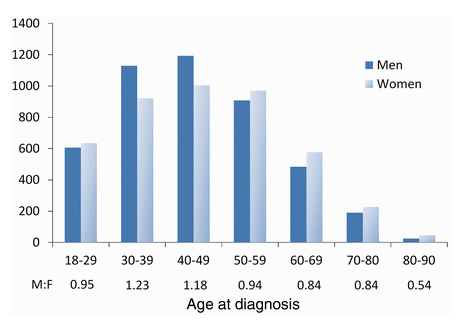 Results of a UK study showing the prevalence of psoriatic arthritis in men and women based on age
Results of a UK study showing the prevalence of psoriatic arthritis in men and women based on age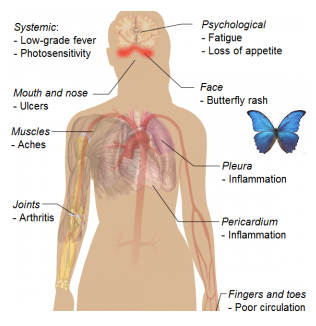 There are many different symptoms associated with SLE. These can include swelling of the joints and associated pain, skin rashes, fever, appetite loss, sensitivity to sunlight, hair loss, lethargy, and weight loss.
There are many different symptoms associated with SLE. These can include swelling of the joints and associated pain, skin rashes, fever, appetite loss, sensitivity to sunlight, hair loss, lethargy, and weight loss.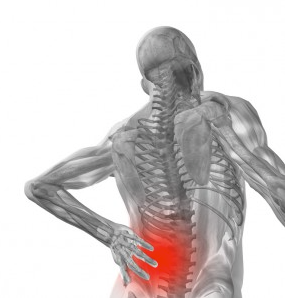 Inflammatory back pain is a key characteristic of this disease. The associated stiffness can interrupt sleep patterns and increase fatigue. The sacroiliac joints are the starting point for AS.
Inflammatory back pain is a key characteristic of this disease. The associated stiffness can interrupt sleep patterns and increase fatigue. The sacroiliac joints are the starting point for AS.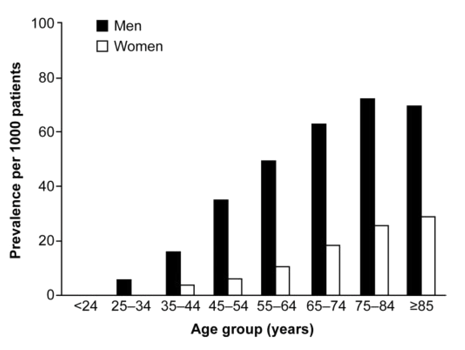 Prevalence of gout in the UK by age and sex
Prevalence of gout in the UK by age and sex